Are you struggling to figure out how to utilize books in music class? There are so many great children’s books out there! But how do you tie it in with concepts you are teaching in music class?
This post will share some of my favorite books to use in music class, as well as how I tie them in with musical concepts I am teaching.
Why Use Books for Music Class?
Maybe you are wondering why you should be incorporating books into your music lessons. I agree that not every lesson calls for a book. But sometimes, the right book can add that extra connection within the lesson.
Draws Interest
Who doesn’t love a good story? It draws you in. It pulls at your heartstrings. You wonder what will happen next. You relate to the characters. All these forms of connection will help create stronger learning connections.
Helps Student Recall
Teaching about rests? Sure, you could just teach the concept at the board. And it would be a lot faster too! But maybe not that memorable. But take the time to read a story about the importance of silence and I guarantee you those students are about 10x more likely to remember that lesson.
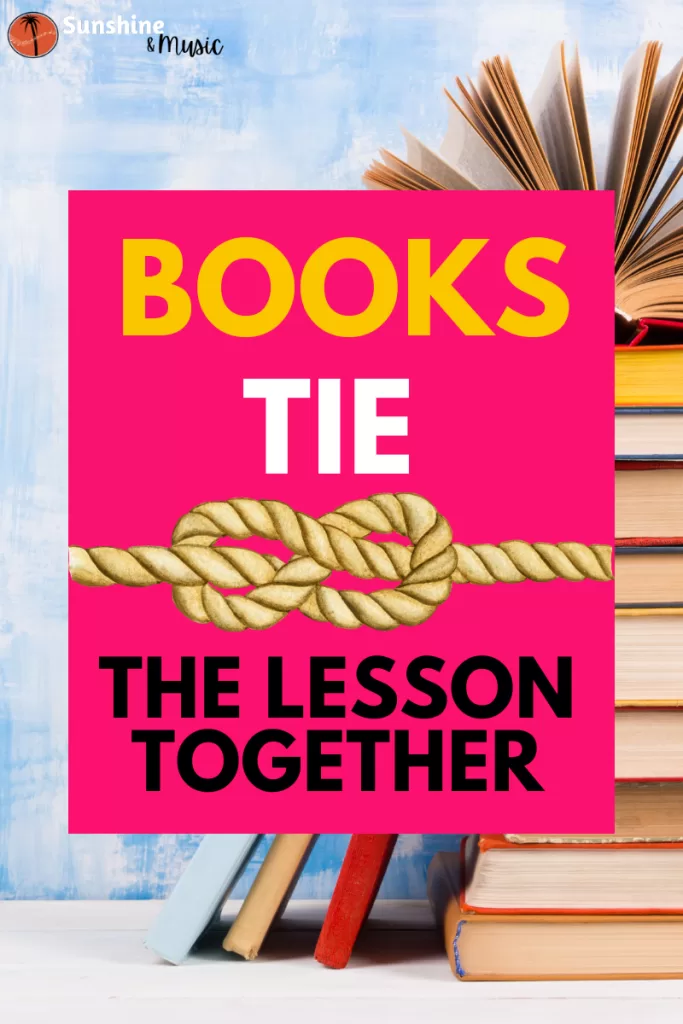
Strong Cross-Curricular Connections
Whether you are talking to your principal, looking at your state music standards, or looking at the standards for National Boards, one thing is constant. Cross-curricular connections. Making connections to ELA, social studies, art and beyond is easy with the help of a book.
Finding Books for Music Class: What to Look For
A lot of different types of books can work within your music lesson, depending on what you are trying to teach. But here are some of my top recommendations.
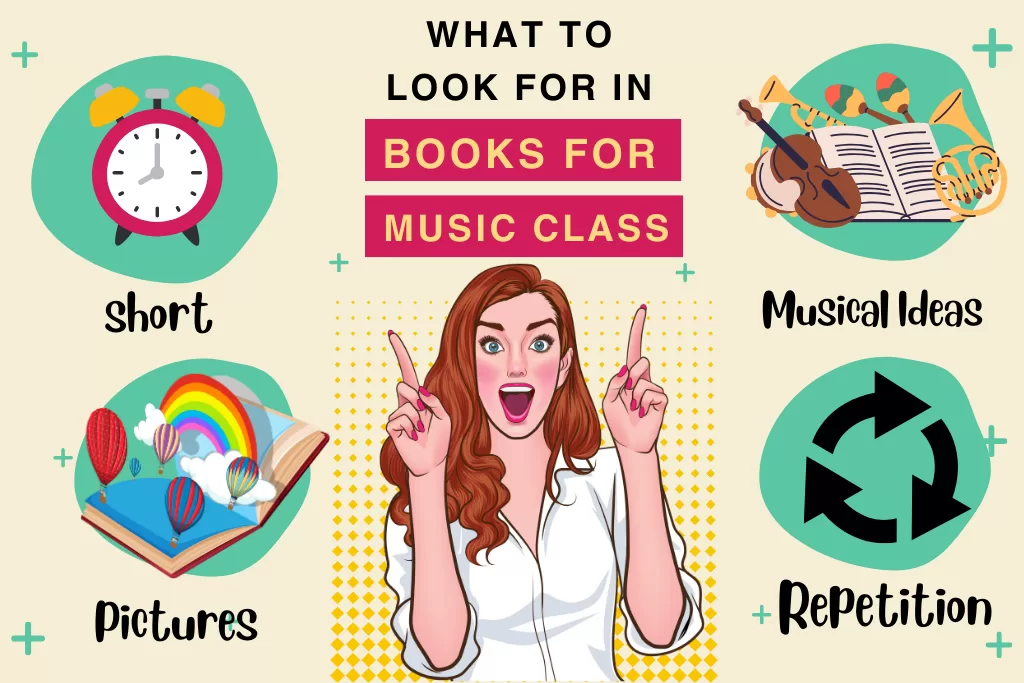
Short Children’s Books
A chapter book is probably not going to be the best choice. Less words is better. Especially if you are using it with younger students. Picture books are definitely my go to.
Repetitive Phrases
Finding repetitive phrases can help. Especially if you are looking to add some sort of instrument part to go along with the book. You could create a simple melody or chant that students do whenever the repeated phrase happens in the book.
What do I mean by a repetitive phrase? Think of Green Eggs and Ham and the phrase “I do not like green eggs and ham. I do not like them, Sam I am.” This phrase pops up several times throughout the book and sort signals the end of a section of the story.
Musical Themes
So some books are obviously about music. Biographies of famous composers or song lyrics that have been illustrated into a book, for example.
But other books might have hidden opportunities. A book that highlights onomatopoeia could be great for adding percussion parts. A book that talks about working together could be good to create an orff arrangement where each part works together. Books with rhythmic language can easily be used to teach new note values.
Any book is fair game, if you can find a good way to link it in with what you’re teaching.
My Favorite Children’s Book for Elementary Music
Children’s Books for Teaching About Musical Elements
Books for Teaching Tempo
Grand Old Duke of York
I haven’t done this book, but I have done this song. I love using this song to learn about different tempos. I have the students march in place and we reach up whenever we say the word up and we touch the ground whenever we say the word down.
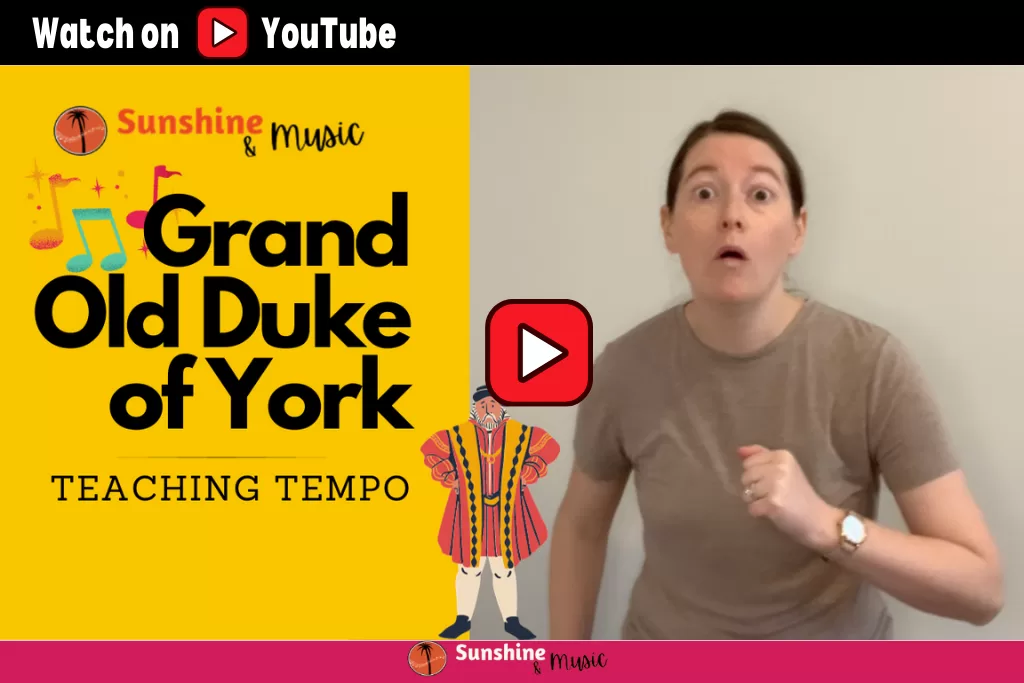
I have found it super effective for getting the point across when we are learning different tempo vocabulary words. Adding a book would be a great way to have some visual interest. Maybe read the book, then do the activity.
Going On a Lion Hunt
Going on a Lion Hunt is like taking a trip to Africa. The pictures are just delightful! I use this book to teach about tempo with my second graders.
The first time, we just read the book normally. If you aren’t familiar with this chant, here are the basic moves that are typically performed while doing the words.
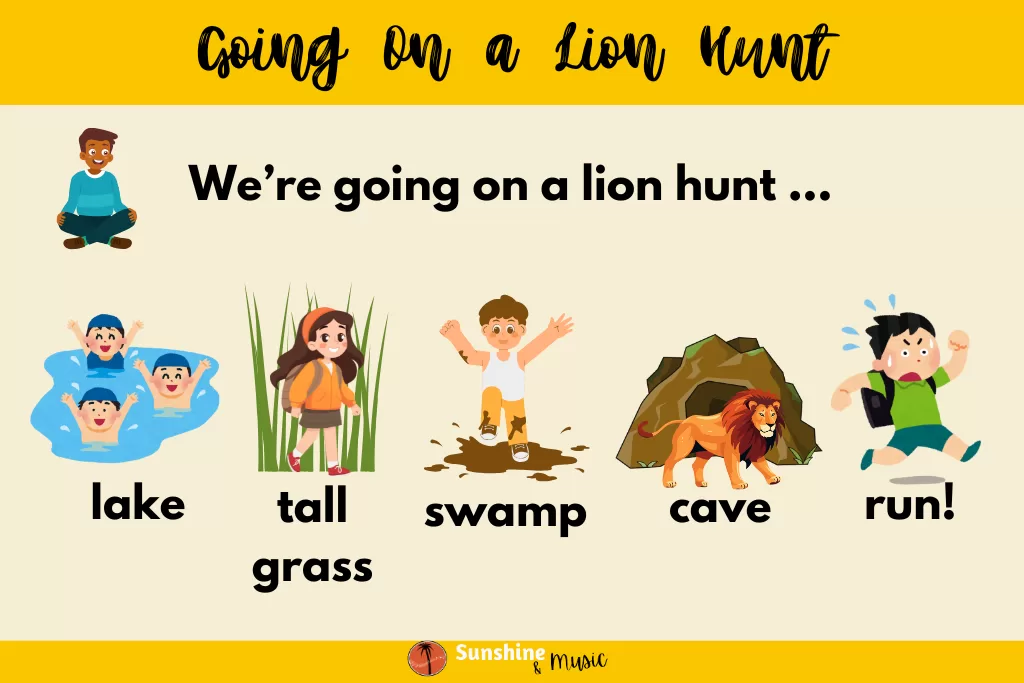
Hands pat your lap alternating left and right to the steady beat as you echo the leader’s words (ex. Leader: We’re going on a lion hunt. Class: We’re going on a lion hunt …)
The motions stops and you pretend to look when it says to look. Then you act out going through each obstacle. (Splashing through the water, wading through the tall grass, etc). Finally, when you get to deep dark cave and spot the lion, you run (aka, pat your lap really fast). You go back through each obstacle, this time at a fast tempo. At the end you can ask the students what happened to the tempo when we spotted the lion.
Then, in the next music class, I play In the Hall of the Mountain King by Edvard Grieg. I don’t read the story this time. We just look at the pictures and do the movements. We talk about the tempo change during the song. You could definitely discuss the change in dynamics as well.
Dynamics
I love using Ten Oni Drummers by Mathew Gollub to teach about dynamics. This is also a great book to learn counting to ten in Japanese, learn about oni (creatures from Japanese folklore), and to learn about taiko drumming.
In the book, it starts off with one oni, and builds up to ten oni. We start the book off at a whisper and by the number ten, we are almost shouting. I take the opportunity to talk about what the word dynamics means. There is a phrase that shows up in the book. We say this phrase at the end of each page, starting at a dynamic level one and working our way up to level ten.
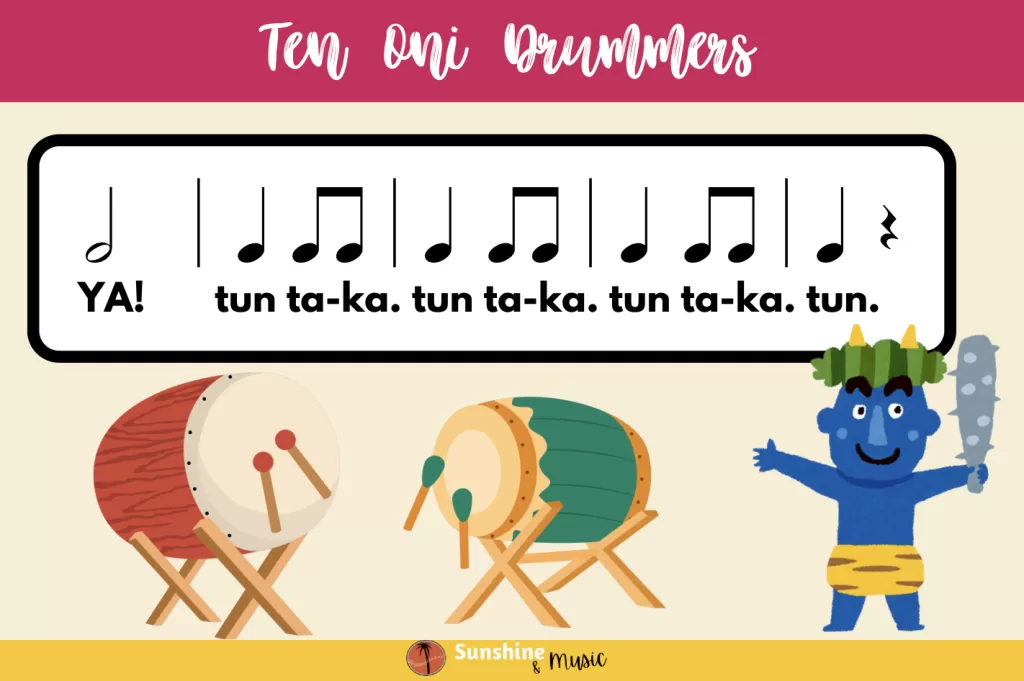
The piece de resistance is when we add drums. I usually do it as a relay, where students stand in a line behind drums. They play the rhythm at the end of each page, then go to the end of the line and a new student steps forward. The students still have to start quiet and build in volume as the number of onis increases.
Rhythm Values
While we are talking about Japan, I have to mention another book I ran into on a library trip. It is called The Sound of Silence. So, of course, I thought it was a book version of Simon and Garfunkel’s classic song.
It is not. It is a story about a Japanese boy who hears a koto player. The koto player tells him that the most precious sound is “ma” – silence.
So the boy goes all around looking for silence. He can’t find it anywhere. Then he realizes that silence has been around him all the time. In the tiny little spaces between each sound. PERFECT for teaching about sound and silence!
After reading the book, I taught the students a little song I made up:
Silence is part of music too.
Sounds make music that is true.
But just like a picture has dark and light.
Silence makes the music notes sound just right.
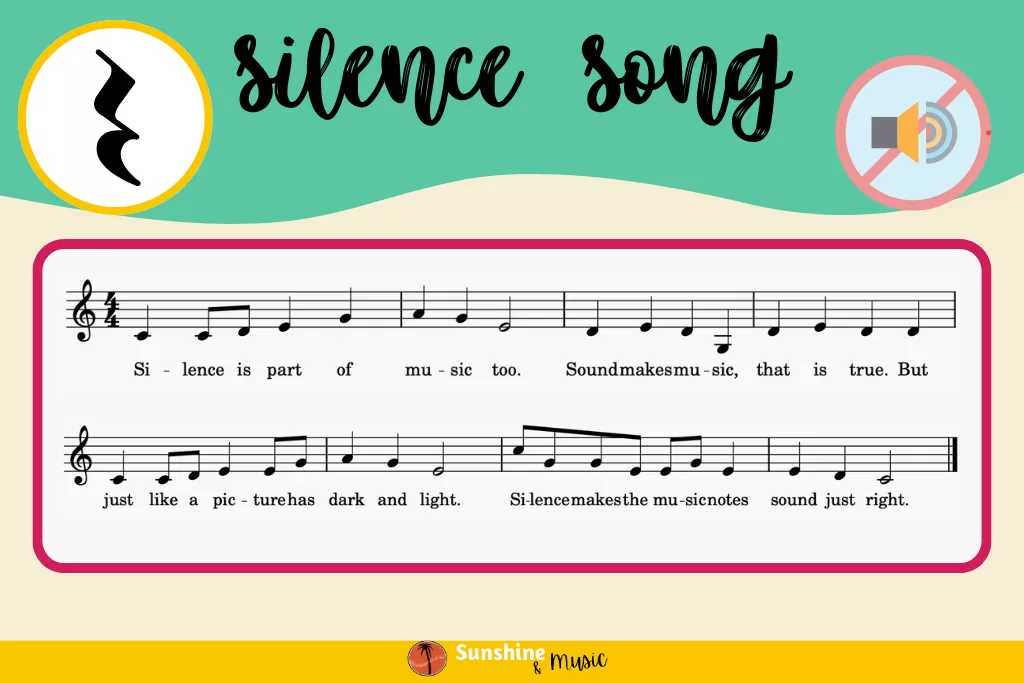
Then students create their own sound and silence pattern using body percussion with a partner. Then, we perform it as a rondo. We sing the song as the A section and then each partner group shares their sound and silence patterns in between.
Children’s Books for Music Class About Famous Musicians and Composers
I Am Mozart Too – A Book for Women’s History Month
This book is about Mozart’s equally talented sister, Maria Anna Mozart. It talks about the early days when both siblings toured Europe performing complex musical pieces for royalty.
Then, it explains the split paths the two siblings took once Maria Anna reached the age to be married, leaving us to wonder what might have been if Maria Anna had lived under different circumstances.
I read I Am Mozart Too to my fourth graders for Women’s History Month in March and they completely soaked it up. I don’t think that some students have a full grasp of how different conditions were for women a couple hundred years ago.
In fact, this book inspired me to put a biography of Maria Anna Mozart into my Women’s History Month Biography Bundle. As of the time of me creating the resource, it is the ONLY biography of Maria Anna Mozart on TeachersPayTeachers!
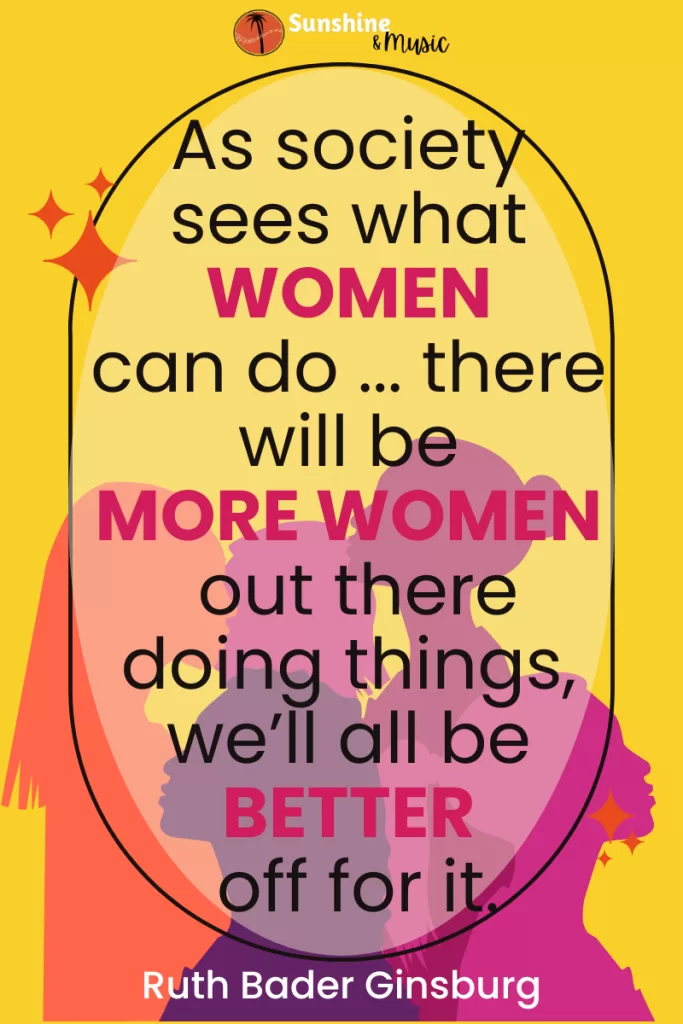
Drum Dream Girl
This book is great for Women’s History Month or Hispanic Heritage Month. Drum Dream Girl shares the true story of a girl from Cuba who wanted to play the drums. She broke the mold and became one of the first famous female percussionists.
This story has beautiful pictures and flowery language that makes you feel like you are on the island of Cuba. And it speaks to the music of Cuba, and also the obstacles that girls had to face to become professionals in the field of music.
Ada’s Violin: The Story of the Recycled Orchestra – Great for Earth Day
Ada’s Violin tells the true story of the Recycled Orchestra. I read this book with students. Then we watched a short video about the real recycled orchestra. We then finished by creating our own recycled instruments.
I could see this unit going great with activities focused on Earth Day. You could talk about recycling, sing an Earth Day song, or think of ways we could help reduce our impact on the Earth. It would be a great time for collaboration with a grade level teacher or a STEM teacher.
I could also see this used with the Scince of Sound. You could talk about how each instrument creates their sound as you create your recycled instruments.
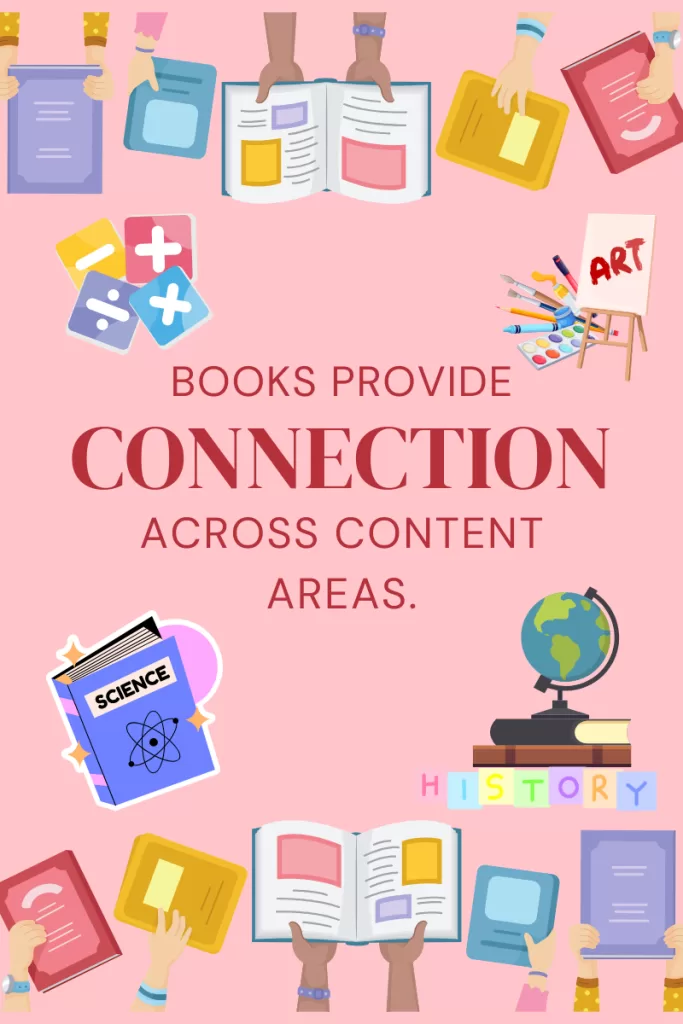
Duke Ellington
I teach a unit on jazz and we always start on with early jazz and the Harlem Renaissance. This book, simply titled Duke Ellington, talks about the life of Duke Ellington. There is even a Reading Rainbow episode that features it if you have access to that series.
The Harlem Renaissance is such a good topic to bring up during Black History Month. Much of the pride of African American Heritage and the roots of the Civil Rights movement came form this lesser known movement. And the music of that time is a big part of the movement, so it fits in perfectly with music class.
Read all about my Harlem Renaissance lesson here, or grab the entire Intro to Jazz unit here.
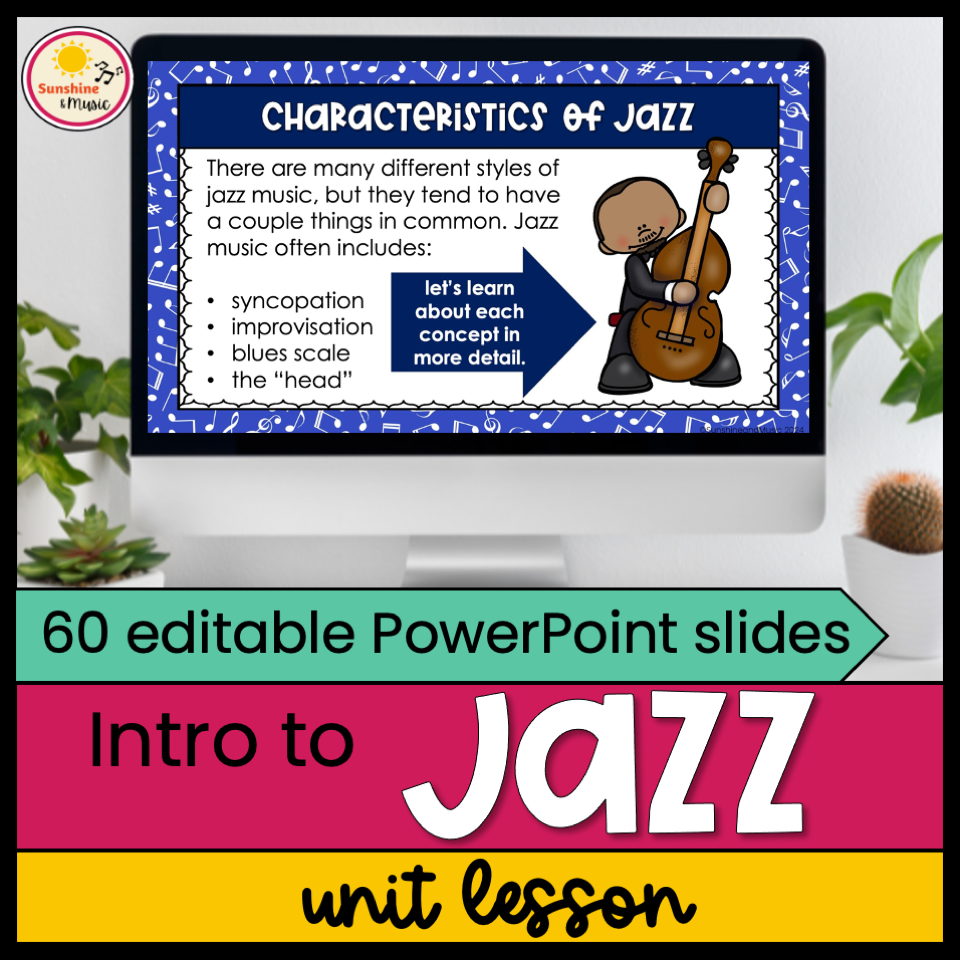
Songs Made Into Children’s Books
This Little Light of Mine
The pictures in the book are so beautiful and tell the story of a child “letting their light shine.” It is great for talking about social-emotional themes.
The song is very simple (and often even has cute motions with it). You could use this book to introduce the song, then have your younger students learn it for a performance!
Star Spangled Banner
If you are teaching the National Anthem, this book helps bring it to life. There are so many advanced or arcane words in the National Anthem. It can be hard to comprehend for your average elementary student.
But with pictures and historical context, you can help students better understand exactly what they are singing about.
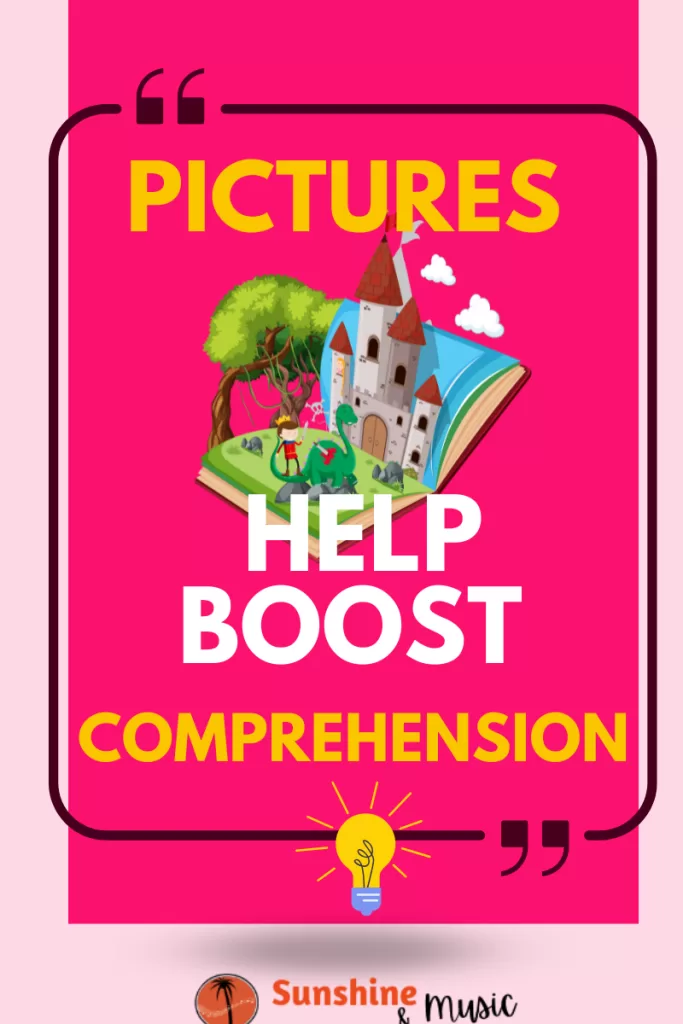
Peter and the Wolf
We can’t forget Peter and the Wolf! Honestly, this book could be it’s own blog post. Actually, it already IS its own blog post. You can read about some fun activities for Peter and the Wolf here.
I will just say that Peter and the Wolf continues to be a classic that has great storytelling and also very effectively teaches the timbres of instruments in the orchestra. Highly recommend!
Books for Music Class on the First Day of School
Pete the Cat Rockin in My School Shoes
I use this book religiously on the first day of kindergarten. I love how it mentions various parts of the building and how they are different. This is perfect at our PBIS school for talking about the different behavior expectations in each area of the school.
And the book has a refrain; “Does Pete worry? Goodness, no.” I love this for my more anxious kids. It helps acknowledge that some kids might be feeling anxious their first day, but that’s normal and that everything is ok.
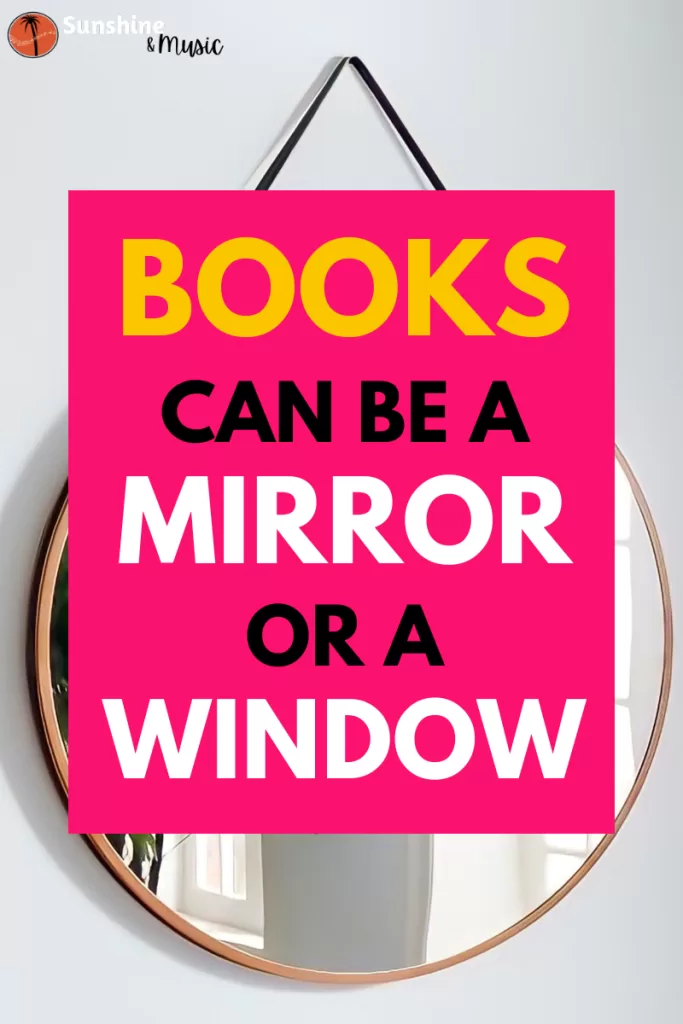
Oh and did I mention that the book has a link to the Pete the Cat website. There is a recorded read along, complete with a fun song that repeats throughout the book. Critical for full enjoyment of this book!
Click here if you want to check out my full first day of kindergarten lesson.
All Are Welcome Here
This book is excellent for teaching about inclusivity. Each page has lots of pictures of different types of students, and the refrain repeats “All Are Welcome Here.”
I added some music to the book. Here is the basic melody and I just repeat it for each section of the book. With my middle/older grades, we used it to learn about Mi-Re-Do. We read the pattern on the staff and played it on instruments.
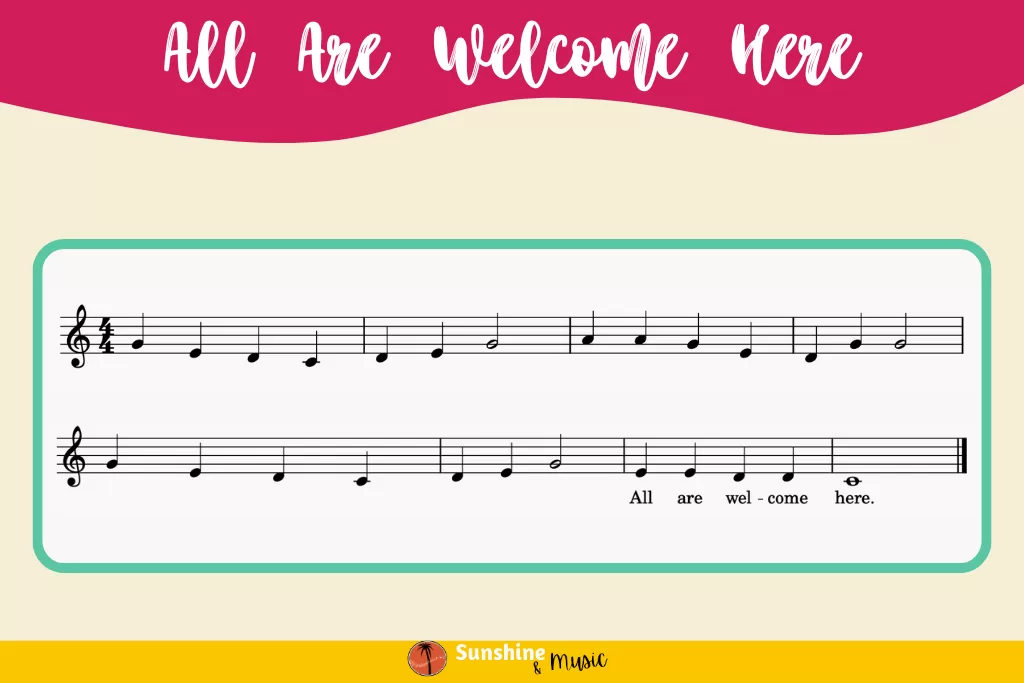
If you want more details on the first day of school with each grade level, you can check out my blog post How To Have a Successful First Day of School.
Want More Ways to Use Books for Music Class?
I would be remiss if I didn’t mention another great resource for children’s literature in the music classroom. Katie Grace Miller has written a book: Awesome Books With Musical Hooks that has tons more recommendations you can use.

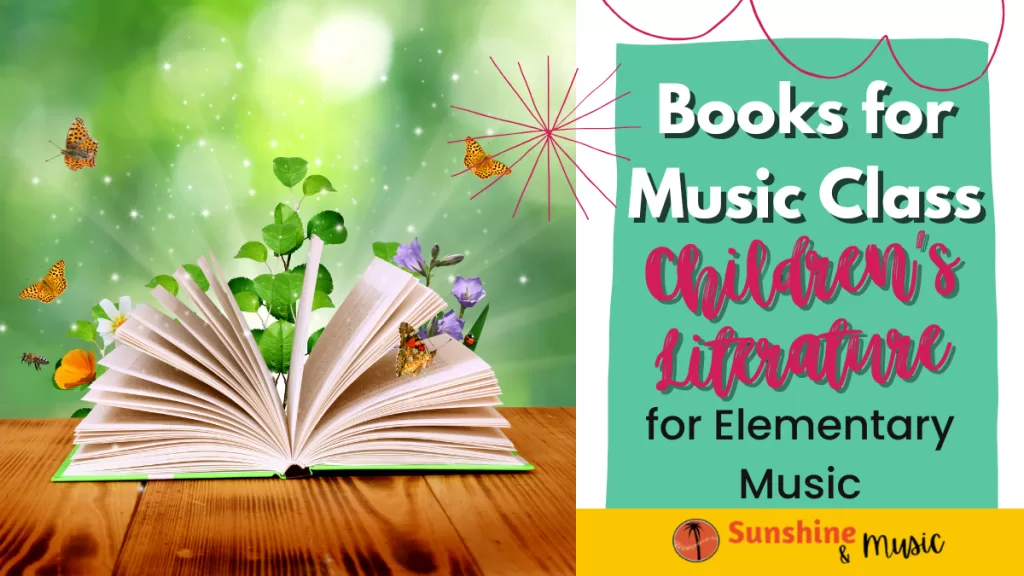



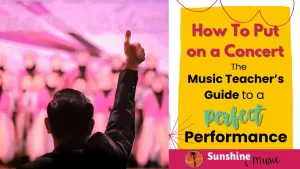


3 Responses